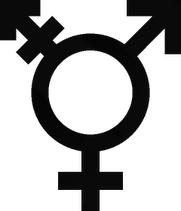Was King Hatshepsut Trans?
Egypt's most famous female pharaoh, alternately called Queen or King Hatshepsut by 21tst century media outlets, ruled ancient Egypt from 1473-1458 B.C. S/he was apparently well known for wearing a false beard--although it's not known if s/he really wore it all the time or just had depictions of her/him done with the beard in place to more closely resemble the previous pharaohs.
National Geographic says "Art from this period shows her wearing feminine garb but capped with the headdress of a male king. Eventually Hatshepsut was depicted in statues and wall carvings as afully male ruler: bearded, bare-chested, and without breasts."
National Georgraphic also calls Hatshepsut "the gender-bending queen." But is it really accurate to use our modern terminology to describe someone who existed before those words were invented? Especially when we don't know if the motivation for those actions were the individuals gender identity or desire to be taken seriously as a ruler?





4 comments:
Winnie Brant makes an interesting (I'm not sufficiently scholarly to determine if it's legitimate) argument that Akhenaten might have been trans in the Gender Blending anthology (1997). She mentions Hatshepsut therein:
"Hatshepsut is often depicted with the physique of a male, wearing a masculine skirt and topless, but with no sign of breasts. At other times she is portrayed as a woman in figure and dress. Interestingly, no one has suggested that she developed a disease that made her appear masculine. Instead, it is understood that her motive was to gain political power: kingship was a man's job, and one had to act and dress the part."
- from "The Gender Heresy of Akhenaten"
but i don't think that makes her trans, necessarily.
As far as we know, we have no idea how she felt about it: whether she felt wearing male royal regalia was the equivalent of a woman wearing a suit to the office (once a thing only men did, after all) or whether she felt her gender differently than expected. plenty of women have crossdressed throughout history to gain entry into the world of men, or rather, into worlds of independence, power, mastery, ownership, etc.
I'm reminded of that bit in The King & I, where the Siamese courtiers keep calling Anna "Mr." (because she was educated, which women weren't, thus, the male honorific).
When I saw an exhibit about Hatshepsut at the de Young museum (here in San Francisco) last winter, the curator argued that the masculine/male depictions were "dressing the part" since pharohs were expected to be male, have beards, etc.
As far as Hatshepsut's own gender identity what s/he thought about these depictions -- IIRC, there's no record about that.
Hatshepsut, like all Egyptian rulers used official portraiture to convey a political message. She probably was not trans but was no doubt very ambitious. The depictions of her in male drag, as it were, date from well after she was the de facto ruler of Egypt. In any case she must have been a very remarkable woman. Drag King or not.
Post a Comment